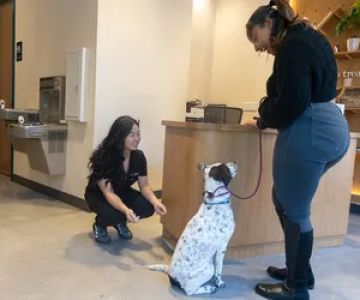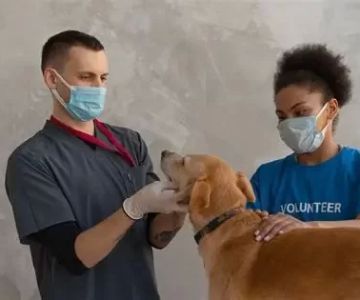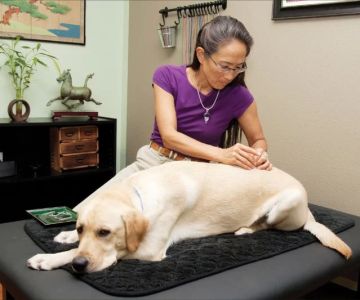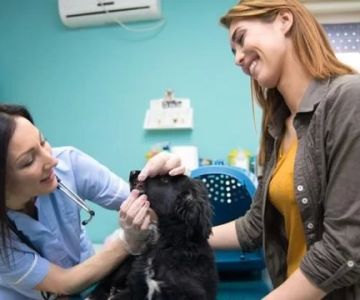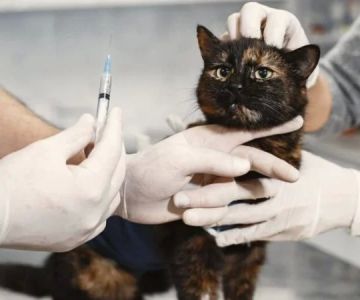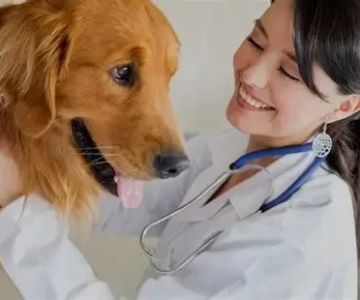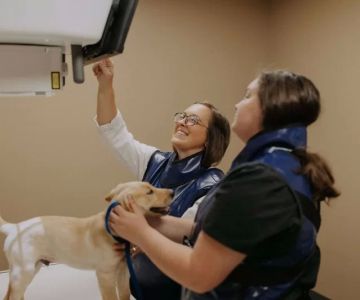As a pet owner and an animal lover, I’ve always been fascinated by how veterinarians assess the health and behavior of animals. One particular aspect of veterinary neurology that often comes up in discussions is the menace reflex. This simple yet crucial test is used to assess the function of an animal’s vision and its neurological health. But how does a veterinarian measure the menace reflex, and why is it so important in diagnosing certain conditions? Let's dive deeper into this fascinating topic to understand its significance and how it is tested in animals.
1. What is the Menace Reflex?
The menace reflex is a neurological test that helps veterinarians assess the ability of an animal to recognize and respond to a visual threat. Essentially, it checks whether an animal’s brain and nervous system are functioning properly when it comes to interpreting visual cues. The test is usually done by quickly moving a hand or an object towards an animal’s face in a way that would typically make it flinch or blink, simulating a “threat.” If the animal reacts by blinking or retracting its head, it indicates that its visual and neurological systems are working correctly. However, a lack of response can signal underlying health problems.
It’s important to note that the menace reflex is not just a test of vision; it also involves the brain’s ability to process and respond to visual information. This makes it a valuable tool in diagnosing a range of conditions, from blindness to neurological disorders like stroke, trauma, or even certain types of brain tumors. In essence, the menace reflex serves as a window into an animal’s nervous system.
2. Importance of the Menace Reflex in Veterinary Practice
In my experience, one of the most significant uses of the menace reflex is in determining whether an animal has intact vision or neurological function. As a pet owner, it can be difficult to gauge if your pet is experiencing vision loss, especially if the animal is young or still adjusting to its environment. The menace reflex is a quick and non-invasive way for a veterinarian to identify potential issues with sight or neurological health.
For example, when a dog or cat experiences a sudden loss of vision, it may not immediately exhibit outward signs. However, a veterinarian can perform the menace reflex test and detect abnormalities. This can lead to a more targeted approach in diagnosing the issue, whether it’s related to the eyes themselves or to something deeper in the nervous system.
Moreover, the menace reflex is frequently used in neurological examinations. If an animal fails to respond to the threat of a hand approaching its face, it could be indicative of a brain injury, inflammation, or even a tumor pressing on the optic nerve or brainstem. In these situations, the menace reflex becomes an early warning sign that something may be amiss.
3. How is the Menace Reflex Tested?
The actual process of testing the menace reflex is straightforward but requires some finesse. Typically, a veterinarian will position themselves in front of the animal, ensuring that the animal is calm and can clearly see the movement of the hand or object. The test is done by bringing a hand or an object toward the animal’s eyes in a swift but controlled manner, without touching the animal. The goal is to see if the animal blinks or pulls away from the approaching hand.
One of the key aspects of the test is that the animal should be looking directly at the approaching hand or object. This ensures that the animal has a clear visual path to detect the “threat.” If the animal responds by blinking or moving its head back, it shows that the visual and neurological systems are intact. However, if the animal does not react, the veterinarian may suspect a problem with the nervous system or vision, and further tests may be required.
The test itself is simple, but the interpretation of results requires veterinary expertise. A failed menace reflex test does not automatically confirm blindness or a neurological issue, but it does signal the need for further diagnostic evaluation. A veterinarian may follow up with additional tests like retinal exams or MRI scans depending on the situation.
4. Factors Affecting the Menace Reflex
While the menace reflex test is generally reliable, there are several factors that can affect the results. One such factor is the animal’s age. For example, puppies and kittens may not exhibit a fully developed menace reflex until they are a few weeks old. This is because their nervous systems and vision are still developing. Therefore, the test may not be an accurate reflection of the animal’s ability to respond to visual threats at such a young age.
Another factor to consider is the temperament of the animal. Some pets may be naturally more cautious or skittish, which could influence their response to the test. For instance, a particularly shy or anxious dog might recoil at sudden movements, but this does not necessarily mean that it has vision problems. In these cases, a more gradual approach to the test may be necessary.
Additionally, some medical conditions or medications may interfere with the ability of an animal to respond to the menace reflex. Certain neurological disorders or sedatives can dull the response, leading to false negatives. This is why a thorough examination and consideration of the animal’s overall health are essential when interpreting the results of the menace reflex test.
5. Real-life Case Example of Menace Reflex Testing
During a recent visit to the veterinary clinic, I witnessed an interesting case where the veterinarian used the menace reflex test to diagnose a neurological issue in a dog. The dog, a middle-aged Golden Retriever, had been having trouble navigating its surroundings, often bumping into furniture and showing signs of confusion. The veterinarian performed the menace reflex test and found that the dog failed to respond to the approaching hand, which was a concerning sign of potential vision loss or neurological issues.
After conducting further tests, the veterinarian discovered that the dog had a brain tumor affecting the optic nerve. The earlier detection of this issue through the menace reflex test allowed the veterinary team to begin treatment promptly, preventing further deterioration of the dog’s condition. This case clearly demonstrated the power of the menace reflex test in identifying potential health problems early on, and how it can save lives.
6. Common Issues in Menace Reflex Testing
While the menace reflex test is a valuable diagnostic tool, it is not without its limitations. One common issue is that the test can sometimes produce inaccurate results due to external factors. For example, a stressed animal might not respond correctly, even if there’s nothing wrong with its vision or nervous system. In such cases, it’s essential for the veterinarian to consider the animal’s overall behavior and health before jumping to conclusions.
Another challenge is that the test only provides a snapshot of the animal’s neurological and visual function at that moment. If the test is done during a particularly stressful time, such as in an unfamiliar environment or during a visit to the vet, the results may not be as reliable. This is why veterinarians often combine the menace reflex test with other diagnostic tools to get a clearer picture of the animal’s health.
Despite these challenges, the menace reflex remains one of the most useful and widely performed neurological tests in veterinary practice. When combined with other diagnostic methods, it can provide critical insight into the health of an animal, helping veterinarians make informed decisions about treatment and care.

